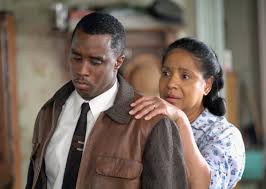I work in the arts.
All you fundraisers who work for human service organizations, you have these heartwarming stories to tell–about children learning to read, or families getting food to eat.
But I raise money for a theater company. Can I use storytelling in my fundraising too?”
I heard this question when I presented a Nonprofit Academy webinar called Where’s the Story? Discovering Stories that Drive Donations. But it wasn’t the first time I’d heard it. And every time I hear it, it makes me want to cry.
If your nonprofit is an arts organization, storytelling is in your organizational DNA. It’s in the drama you put on stage, or the moment you capture in paint, or the music you present to a live audience. You take the randomness of everyday events and shape it, so people will stop, look, listen, and wonder. That’s what a good story does too.
So yes, arts organizations, you can tell stories to your donors. In fact, they are the perfect audience for them! But it’s up to you to find and craft those stories. Here’s how.
Stories are about people
The first thing to do is figure out the protagonist of your story. Who is the story about?
I think that’s what was puzzling the webinar participant who worked for the theater company, the one who asked me that question. She was probably thinking about things like the schedule of plays this season, or the artistic choices involved in the direction and staging, or the great reviews the production has already received, and asking herself, “What’s the story here?”
And she was right. Those are not stories–because they have no protagonist, no central character to follow.
You can turn statements into stories
Focus on a protagonist with a problem, and you can transform dry facts into dramatic stories. For example, you could take a list of titles of plays and turn it into this message from your Artistic Director:
“As 2016 goes on, I have been dreading each day’s news. One act of mass violence has followed another around the globe. I look to political leaders, hoping for solace and wisdom, and instead I see them spreading fear and hatred.”
“Here in our theater, I shudder…and I wonder, what can we do as a theater to bring us back to our a sense of our shared humanity? The 2017 season is our answer. We begin with Antigone, a story of a woman caught on the losing side of a civil war who refuses to put loyalty to nation over loyalty to family…”
Notice! Instead of a list, now you have:
- a person (your Artistic Director)
- facing a challenge (how do I stop feeling overwhelmed and make a contribution to a more peaceful world?)
- and overcoming it (through this year’s program)
That’s classic narrative. You’ve turned a statement into a story. And your donors are going to notice, too.
Stories speak to an arts audience
The thing is, unless your Artistic Director is really well-known and loved, it’s not her or his story your donors want to hear.
As fundraising expert Tom Ahern puts it, donors are only really interested in two things. “What did you do with the money I gave you?” and “What difference did it make?”
And the difference they want to hear about is probably not that it made the AD feel worthwhile, or even that it gave jobs to dozens of actors and set painters.
What difference do the arts make to the audience?
Your donors are interested in the experience of the arts. They know what it’s like for them to walk around a Rodin and look at it from all sides, or hear unexpected music in the subway, or go to a play. They want you to make sure others share that experience.
Can you find audience members who will tell any of these stories?
- “I never liked Shakespeare. When they tried to teach it to me forty years ago in high school, I tuned it out. But then my wife dragged me to your production of King Lear, and I wept for a man looking back at the ruin of his life. Now the words make sense, and they make me think about my own life.”
2. “I thought my family was the only one where parents and children fought about how to stand up proud against people who want to put us down. Now that I’ve seen Raisin in the Sun, I will never look at my parents the same way again.
3. “My mind was whirling. My heart was downcast. Your production of Stomp was better than medicine. I am going back tomorrow!”
If I gave money to your organization and heard these stories, I would rejoice. And give again.
What’s another story you can tell that would move your arts supporters to give?


